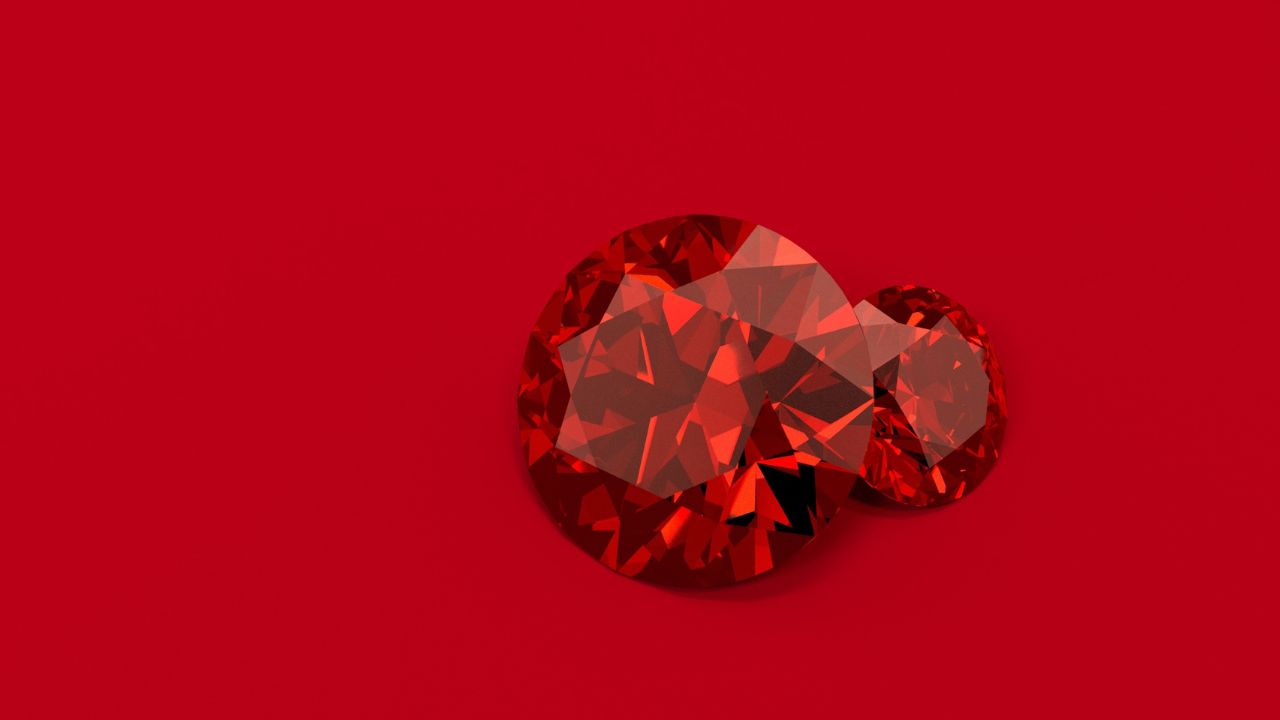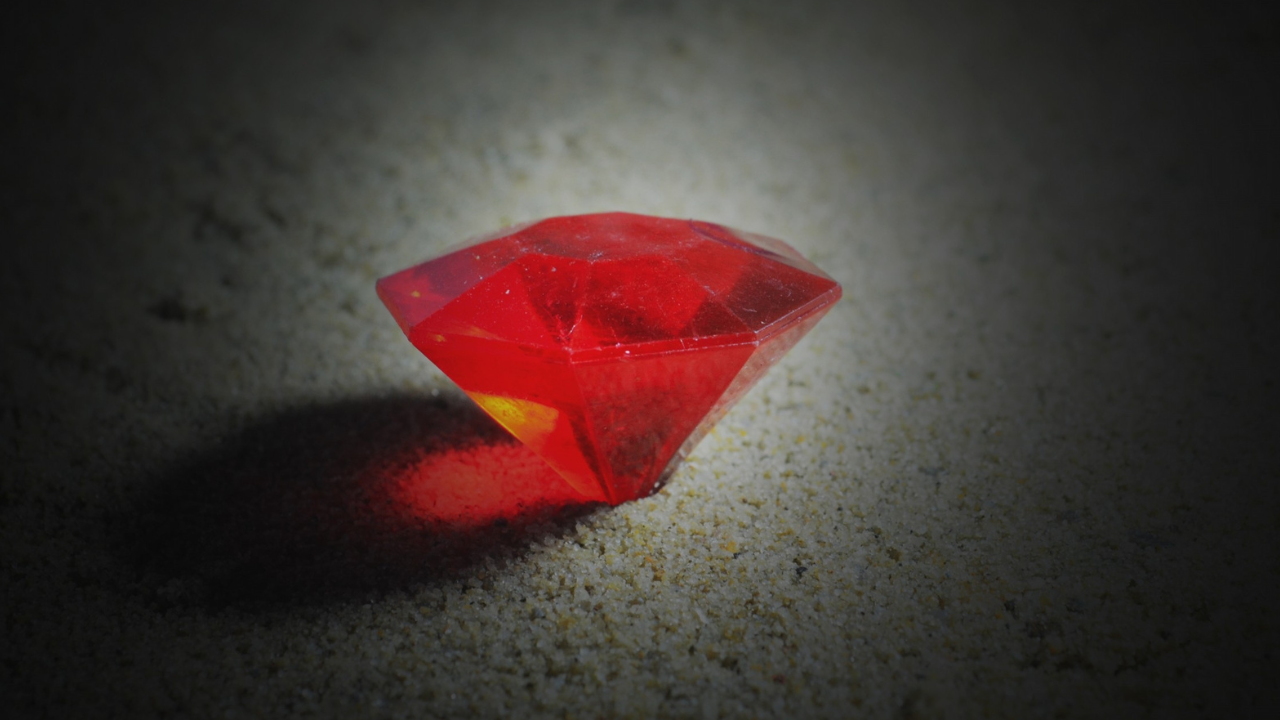The ruby, with its rich red color, stands as the magnificent birthstone for those born in July. Throughout history, this stunning gemstone has been treasured not just for its beauty but also for the powerful meanings and energies it carries. From ancient royalty to modern jewelry lovers, rubies continue to captivate with their fiery glow and deep symbolism. Let’s explore what makes this red gem so special and why it remains one of the most beloved precious stones in the world.
The Captivating Red of Rubies
When most people think of rubies, they immediately picture a brilliant red color. This vibrant red shade is what gives rubies their name—coming from the Latin word “ruber,” which simply means “red.” The most valuable rubies display a pure, vibrant red sometimes described as “pigeon blood red,” although rubies can range from pinkish-red to deep, dark red with purple undertones.

The ruby’s red color comes from the presence of chromium in the stone. The more chromium, the stronger the red color becomes. This same element causes the ruby to fluoresce, making it appear to glow from within when exposed to certain light. This inner fire is part of what has made rubies so fascinating to people throughout history.
Unlike other red gemstones like garnet or red quartz, rubies have a distinctive glow and brilliance that sets them apart. When compared side by side with similar-looking stones, true ruby’s color depth and inner light make it stand out immediately.
Ruby as July’s Birthstone
If your birthday falls in July, the ruby is your birthstone. Each month of the year has its own special gem, creating a colorful calendar of birthstones:
- January: Garnet
- February: Amethyst
- March: Aquamarine
- April: Diamond
- May: Emerald
- June: Pearl
- July: Ruby
- August: Peridot
- September: Sapphire
- October: Opal
- November: Topaz
- December: Turquoise, Tanzanite, or Zircon
Among these gems, ruby stands out for its deep red color and rich history. People born in July often wear ruby jewelry not just as a fashion statement but as a personal connection to their birth month. Many believe that wearing your birthstone brings special benefits and protection.
Ruby Science: What Makes This Gem Special
Rubies belong to the mineral family called corundum—the same mineral that makes sapphires. In fact, ruby is actually red sapphire, but it’s so special it gets its own name! Any other color of corundum is called sapphire, whether it’s blue, yellow, pink, or even colorless.

On the hardness scale used by gemologists, ruby scores a 9 out of 10, making it one of the hardest natural substances on Earth—second only to diamonds. This hardness means rubies are excellent for everyday jewelry since they resist scratching and maintain their polish for many years.
High-quality rubies are quite rare, especially in larger sizes. Most natural rubies have small flaws or inclusions. When these inclusions are fine silk-like rutile needles, they can actually create beautiful patterns, sometimes forming a six-rayed star effect called “asterism” when the stone is cut as a cabochon (a smooth-domed cut without facets).
Where Rubies Come From
Rubies form in metamorphic rocks, typically marble, where just the right minerals and conditions come together. While rubies have been found in various locations around the world, certain areas are known for producing exceptional stones:
Myanmar (Burma)
For centuries, the Mogok Valley in Myanmar (formerly Burma) has been famous for producing the world’s finest rubies. Burmese rubies are known for their pure red color with minimal purple or brown undertones.
Thailand
Thai rubies often have a darker red with brownish or purplish hints. While not as valuable as the pure red Burmese stones, Thai rubies are still prized for their beauty and durability.
Madagascar
In recent decades, Madagascar has emerged as an important source of high-quality rubies. Some Madagascar rubies rival Burmese stones in color and clarity.
Other notable ruby sources include Vietnam, Tanzania, Sri Lanka, and Mozambique, each producing stones with slightly different characteristics in color and clarity.
The Meaning and Symbolism of Rubies
Throughout history, rubies have carried powerful meanings:
Passion and Love
The ruby’s red color naturally connects it to the heart and blood, making it a symbol of deep love and passion. In many cultures, rubies represent the intense emotions of romantic love. This association makes ruby jewelry a popular gift between lovers, especially for anniversaries.
Protection and Good Fortune
Ancient warriors believed that wearing rubies in battle would protect them from harm. The stone was thought to make the wearer invulnerable to wounds. Beyond physical protection, rubies have been associated with good fortune and prosperity.
Wisdom and Success
In many traditions, rubies symbolize wisdom gained through experience. The fiery red color represents the spark of life and the courage to pursue success despite obstacles.
Vitality and Energy
The ruby’s vibrant red color connects it to life force energy. Many believe wearing a ruby can boost energy levels and restore vitality during times of physical or emotional exhaustion.
Ruby and Chakra Connection
In energy work and crystal healing traditions, ruby is strongly associated with the Root Chakra (base of the spine) and the Heart Chakra:
- Root Chakra: Ruby’s red energy grounds and stabilizes, helping to create a sense of safety and security.
- Heart Chakra: The ruby’s connection to passion and love makes it a powerful stone for opening and healing the heart, especially after emotional wounds.
The ruby is believed to balance these energy centers, creating harmony between physical security and emotional openness. People working with chakra energy often use rubies during meditation or place them on these energy centers during healing sessions.
Rubies and Zodiac Connections
Rubies have special significance for certain zodiac signs:
Leo (July 23 – August 22)
Many Leos have ruby as their birthstone, which is fitting since both the sign and the stone are associated with fire, passion, and leadership. The ruby’s bold red color matches Leo’s confident and dramatic nature.
Aries (March 21 – April 19)
Though not their birthstone, rubies resonate strongly with Aries energy. Both share qualities of courage, determination, and initiative—making ruby a supportive stone for those born under this sign.
Choosing Ruby Jewelry
When shopping for ruby jewelry, here are some things to consider:
Color and Quality
The most valuable rubies have a pure, vibrant red color without too much orange, purple, or brown. However, different ruby colors appeal to different people—some prefer the deeper, more mysterious look of rubies with purple undertones.
Settings and Styles
Rubies pair beautifully with both gold and silver settings, though many fine rubies are set in gold to complement their warm color. Popular ruby jewelry items include:
- Ruby rings: Often featured as the center stone, sometimes surrounded by diamonds
- Ruby necklaces: From simple pendants to elaborate statement pieces
- Ruby bracelets: Tennis bracelets with alternating rubies and diamonds create stunning wristwear
- Ruby earrings: From classic studs to dramatic drops
Natural vs. Treated Rubies
Most rubies on the market today have been heat-treated to improve their color and clarity. This treatment is considered permanent and accepted in the gem trade. Natural, untreated rubies of high quality are extremely rare and command much higher prices.
The Timeless Appeal of Rubies
Whether you’re drawn to rubies because they’re your birthstone, you love their bold red color, or you connect with their symbolism of passion and strength, these gems have an enduring appeal. From ancient royal treasuries to modern fashion runways, rubies continue to captivate us with their fiery color and rich history.
For those interested in color psychology, rubies represent the perfect expression of red energy—promoting confidence, courage, and passion while providing a sense of security and grounding. It’s no wonder this magnificent red stone has maintained its status as one of the most prized gems throughout human history.